Detectors
CHIMERA (Charged Heavy-Ion Mass and Energy Resolving Array) is a multidetector operating at Laboratori Nazionali del Sud since the new millennium, in its complete 4π configuration [1,2]. It is made of 1192 detection units, each one consisting of a Silicon first stage detector (300 µm), followed by CsI(Tl) crystal, which thickness ranges from 12 to 3 cm, depending on the angle, coupled to a photodiode as second stage. 688 telescopes are arranged in 18 rings covering the polar angles between 1 ° and 30 ° (forward part). These telescopes are placed at a large distance from the target in order to have an enough base of flight and a good solid angle segmentation. In 1999 was conducted the first experiment, the REVERSE experiment, using 688 telescopes installed in the CICLOPE scattering chamber at LNS, for the investigation of reactions in inverse kinematic [3,4,5]. The remaining 504 telescopes are arranged to form a sphere, with a radius of 40 cm, covering polar angle from 30° to 176°. Figure 1 shows a photo of the CHIMERA multidetector inside the dedicated vacuum chamber. The different identification methods used in CHIMERA and displayed in Figure 2 (ΔE-E, E-TOF, Pulse shape discrimination on both silicon and CsI (Tl) detectors) allow a complete detection of charged particles, emitted in nuclear collisions, and a direct measure of the velocity for Z>≈2. Moreover, the detection and identification of gamma-rays, and in some cases of neutrons, is possible thanks to the use of CsI(Tl) scintillators, even if with low efficiency. Recently, the CHIRONE Collaboration has started an R&D phase for the neutron detection, using dedicated plastic scintillators of new generation, such as the EJ276, with the aim to detect the neutron signals [6,7]. Fig. 3 (top) shows a fast-slow correlation obtained using a EJ 299-33 scintillators irradiated with neutron and gamma sources. Fig. 3 (bottom) shows the projection of the slow component for a range of values of the fast component. Furthermore, the collaboration is working on an upgrade of electronics of CHIMERA multidetector.
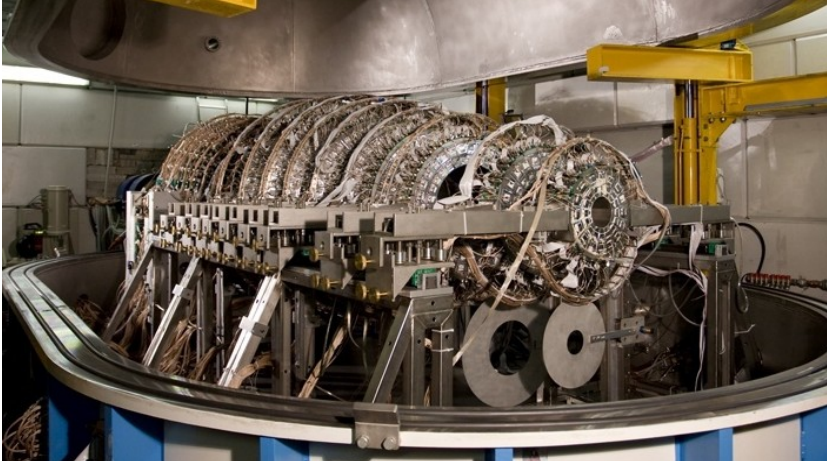
Figure 1: Photo of CHIMERA multidetector inside the vacuum chamber
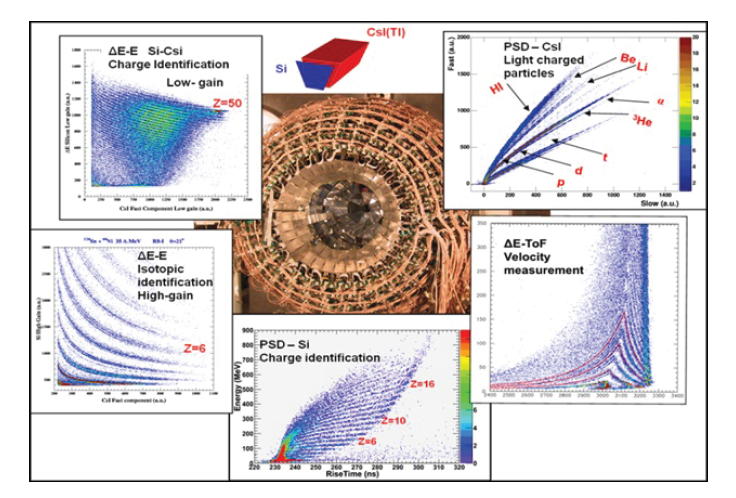
Figure 2: Identification methods used in CHIMERA [1,2,22].
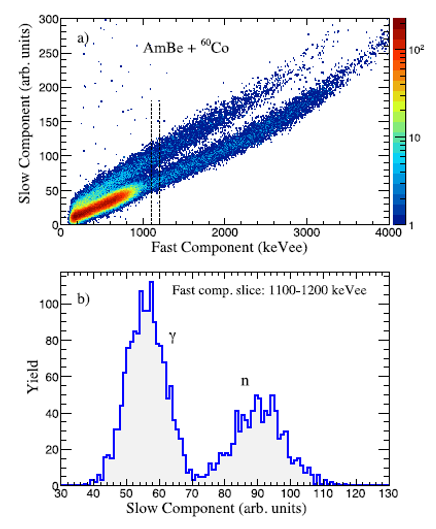
Figure 3: Top: fast-slow correlation obtained using a EJ 299-33 scintillator, irradiatated with a neutron and gamma source. Bottom: projection of the slow component for a range of values of the fast component [6,7].
-
PHYSICS
The high performances of CHIMERA allow to investigate different aspects of nuclear collisions between heavy ions at intermediate energies. The experiments involve both stable and unstable beams produced by in-flight fragmentation (FRIBS@LNS) and the new FRAISE@LNS facility. Here is a (non-exhaustive) list of the main investigated topic:
- Study of the isospin influence and mass dependence of the reaction mechanisms both at Fermi [8,9,10,11] and low energies (≈10 AMeV) [12].
- Study of the isospin dependence of the asymmetry term of the nuclear equation of state both at low (LNS) [13] and at high nuclear density (GSI-Darmstadt) [14].
- Study of Isospin equilibration phenomenon at Fermi energies [15].
- Study of population and nuclei decay, looking for cluster structures in exotic nuclei [16] and stable nuclei [17,18].
- Study of gamma decay of the Pygmy Dipole Resonance in neutron rich isotope as 68Ni [19].
- Study of the population and decay of states of astrophysical interest, eg. Hoyle state of 12C, both in gamma decay channels and in many particle decay channels [20].
- Study of the excitation function of the fusion barrier with indirect methods (distribution of the height of the fusion barrier) [21].
- Development of methods for the nuclear density determination in neck fragmentation processes [22].
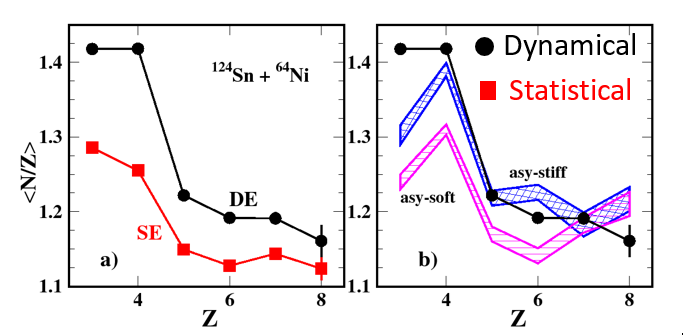
Figure 4: Neutron enrichment of IMF fragment emitted in neck fragmentation processes, compared to fragments emitted in sequential processes (left). Comparison of the dynamic component with an SMF model for different parameterizations of the symmetry energy (right) [13].
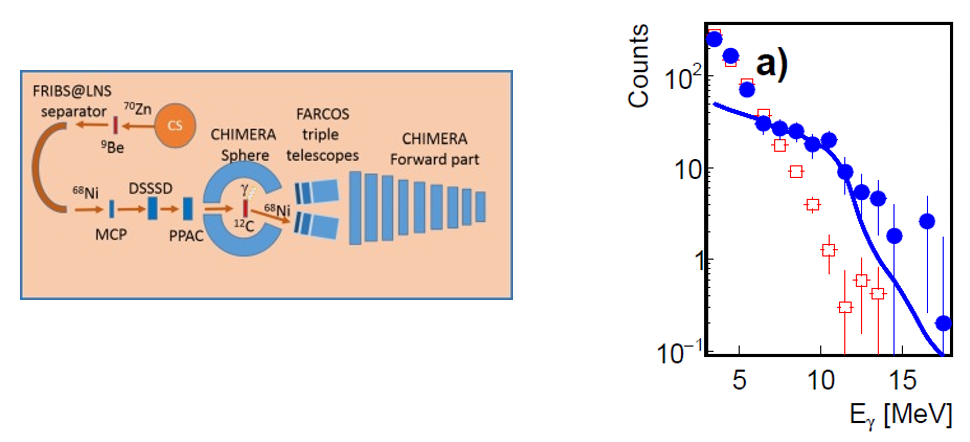
|
Figure 5:Scheme of the experimental set-up used for the PYGMY experiment (left). Gamma-ray energy spectrum detected with CHIMERA (blue dots) and comparison with CASCADE (blue line), the background is plotted with red dots (right) [19]. |
FARCOS
Il correlatore FARCOS (Femtoscope ARray for COrrelations and Spectroscopy) è un nuovo rivelatore sviluppato dalla collaborazione NewCHIM per lo allo studio di correlazioni, femtoscopia e spettroscopia e applicazioni ad esse connesse [23,24]. FARCOS è un sistema di rivelazione compatto e con, rispetto a CHIMERA, un piccolo angolo solido, la cui caratteristica principale è l’alta risoluzione angolare ed energetica e la modularità. Il modulo base di rivelazione è un telescopio costituito da due rivelatori al Silicio di spessori pari a 300 e 1500 um, con segmentazione dell’area di 64*64 mm^2 in 32 strip sia sulla direzione orizzontale che su quella verticale, seguiti da 4 scintillatori a CsI(Tl) di spessore pari a 6 cm. Posizionando i telescopi FARCOS a circa 1 m dal target di reazione è possibile avere una precisione di circa 0.1° sulla misura dell’angolo di emissione dei prodotti. Inoltre è possibile misurare con alta risoluzione coppie di particelle emesse a piccoli angoli/impulsi relativi. Poiché ciascun telescopio necessita di 132 canali di lettura, il Politecnico di Milano ha sviluppato, nell’ambito della collaborazione, dei pre-amplificatori compatti ad alta densità di canali basati su tecnologia integrata ASIC [25]. Sono stati sviluppati anche un nuovo e dedicato sistema di distribuzione delle tensioni di lavoro, e schede di filtraggio/accoppiamento dei segnali verso il sistema di read-out digitale GET. Durante l’esperimento CHIFAR, effettuato ai LNS a novembre 2019, sono stati usati 10 telescopi FARCOS in accoppiamento al multi-rivelatore CHIMERA. I metodi di identificazione usati sono sia la tecnica ΔE-E, che può essere applicata sia come ΔESil300 vs ESil1500, sia come ΔESil1500 vs ECsI, sia l’analisi in forma del segane dei CsI(Tl) per discriminare le particelle leggere. Nel 2020 sarà possibile operare FARCOS nella sua configurazione finale costituita da 20 moduli. FARCOS è già stato utilizzato con successo in esperimenti sul decadimento della Risonanza Pygmy di Dipolo nel 68Ni [19], e per lo studio degli effetti di cluster sia in nuclei esotici, quali 10Be e 16C, che in nuclei stabili alfa-coniugati quali 28Si [18].
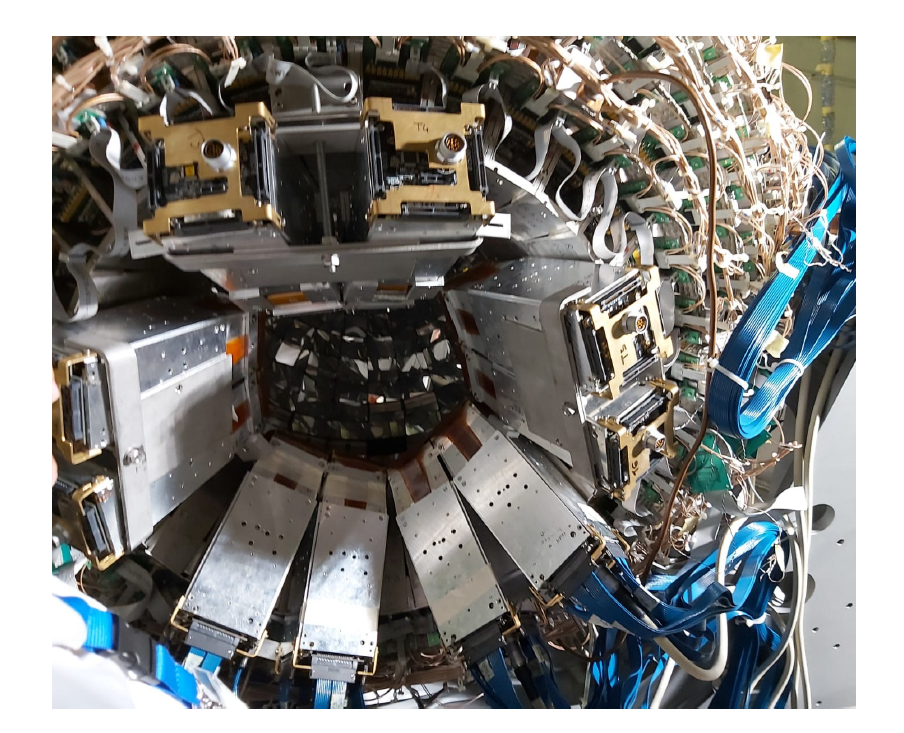
Figure 1: 10 telescopes of the FARCOS array in the configuration used for the CHIFAR experiment at LNS (Nov. 2019).
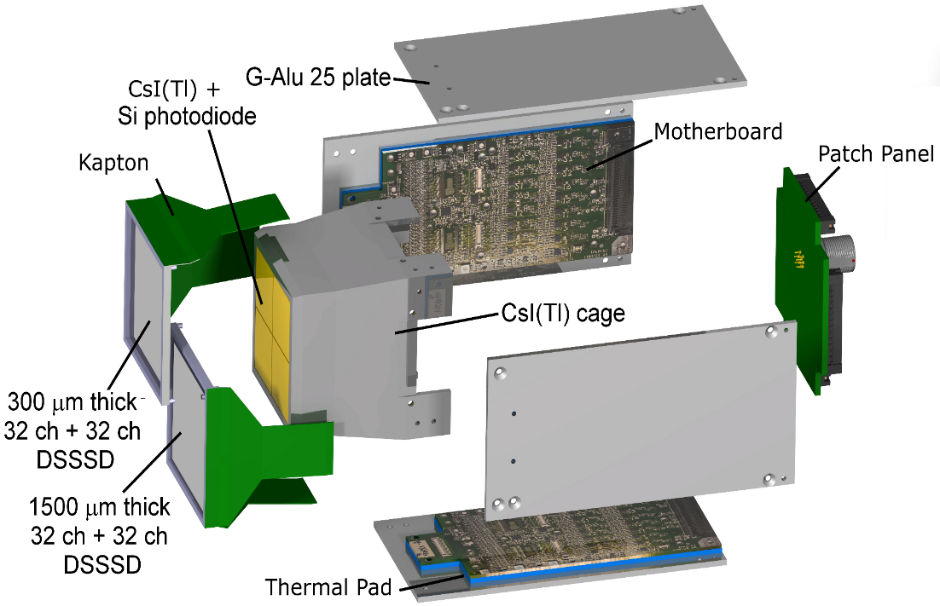
|
Figure 2: Scheme of a FARCOS telescope and of the new preamplifiers. |
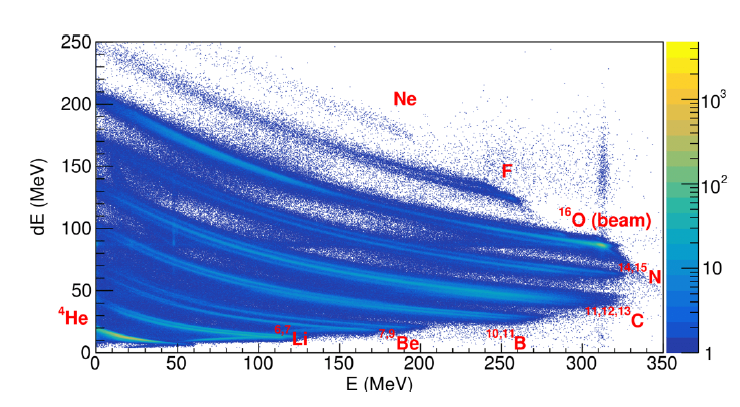
Figure 3: DE-E plot obtained with the FARCOS array during the SIKO experiment [18].
GET Electronics
A causa dell’altissimo numero di canali di rivelazione necessari per la nuova configurazione CHIMERA più FARCOS, l’utilizzo dell’elettronica standard di Front-End risulta onerosa e poco compatta. Per questo motivo i segnali di FARCOS e dei CsI(Tl) della sfera di CHIMERA sono ora letti e digitalizzati utilizzando l'elettronica GET [26]. A tal fine sono stati realizzati da parte della sezione di Catania appositi moduli di adattamento dei segnali di CHIMERA all’elettronica GET; al fine di ovviare al problema del limitato range dinamico dell’elettronica GET; i suddetti moduli producono due copie del segnale in ingresso, a guadagno diverso, permettendo quindi la digitalizzazione dei segnali su due scale diverse [24]. Il sistema di acquisizione ad oggi in uso, basato sul sistema NARVAL, permette di acquisire in parallelo eventi codificati dall’elettronica tradizionale CHIMERA basata su standard VME, ed eventi codificati dal sistema di codifica digitale GET [27].

|
Figure 1: Foto della scheda di dual gain (sinistra) e della sua connessione con una scheda ASAD del sistema GET (destra). |
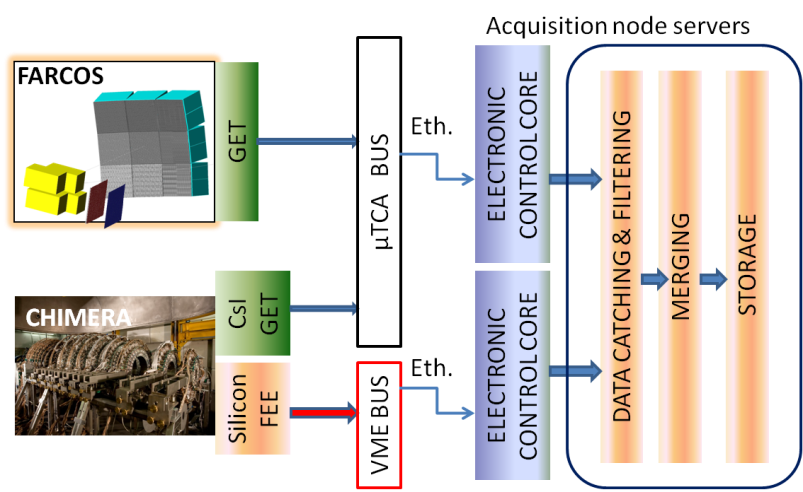
Figura 2: visione a blocchi dell’accoppiamento delle acquisizioni GET e VME
Referenze
[1] A. Pagano et al., Nucl. Phys. A 681, 331 (2001).
[2] A. Pagano et al., Nucl. Phys. A 734, 504c (2004).
[3] E. Geraci et al., Nucl. Phys. A 732, 173 (2004).
[4] E. De Filippo and Pagano A. Eur. Phys. Jour. A 50 (2014) 32.
[5] A. Pagano, Nuclear Physics News International, 22:1 (2012)25.
[6] E.V. Pagano et al., Nucl. Instr. and Methods A 889, 83 (2018).
[7] E.V. Pagano et al, Nucl. Instr. and Methods A 905, 47 (2018).
[8] E. DE Filippo et al., Phys. Rev. C 71, 044602 (2005).
[9] E. DE Filippo et al., Phys. Rev. C 71, 064604 (2005).
[10] F. Amorini et al., Phys. Rev. Lett. 102, 112701 (2009).
[11] G.Cardella et al., Phys. Rev. C 85, 012093 (2012).
[12] S.Pirrone et al., Eur. Phys. Jour. A 55, 22 (2019).
[13] E. De Filippo et al., Phys. Rev. C 86, 014610 (2012).
[14] P. Russotto et al. Phys. Rev. C 94, 034608 (2016).
[15] M. Papa et al. Phys. Rev. C 91, 041601(R) (2015).
[16] D. Dell'aquila et al, Phys. Rev. C 93, 024611c(2016).
[17] Ad.R. Raduta et al., Physics Letters B 705 (2011); B.Borderie et al., Phys. Lett. B 755 (2016).
[18] J. Bishop et al., Phys Rev. C 100, 034320 (2019).
[19] N.S. Martorana et al., Phys. Lett. B782 (2018) 112.
[20] G. Cardella et al., EPJ Web of Conf. 165, 01009 (2017).
[21] A. Trzcinska et al., Acta Phys. Pol. B 49, 393 (2018).
[22] A. Pagano et al., Eur. Phys. J. A 56, 102 (2020).
[23] E.V. Pagano et al., Eur. Phys. J. Web of Conf. 117 (2016) 10008.
[24] L. Acosta et al., Nucl. Instr. and Methods A in preparation.
[25] A. Castoldi et al., Il Nuovo Cimento C 41 C (2018) 168; A. Castoldi et al., IEEE Trans. Nucl. Sci., vol. 64, no. 10, October 2017, pp. 2678-2682.
[26] E. Pollacco, Nucl. Instr. and Methods A 887, 81 (2018).
[27] E. De Filippo et al, IOP Conf. Series: Journal of Physics, 1014, 012003 (2018).


